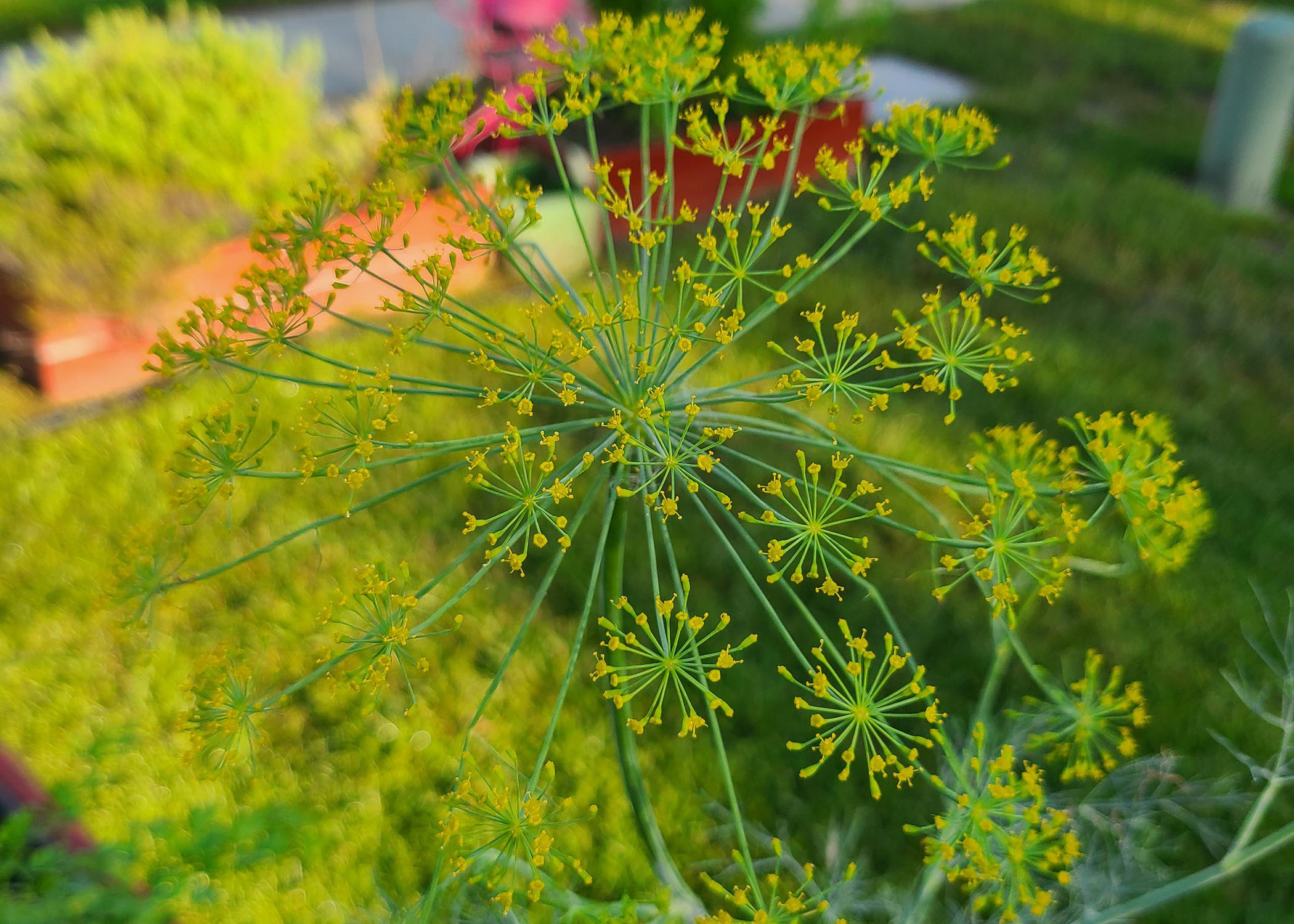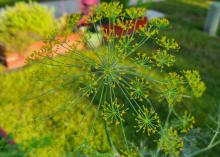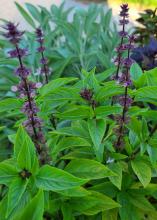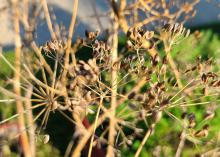Information Possibly Outdated
The information presented on this page was originally released on August 10, 2020. It may not be outdated, but please search our site for more current information. If you plan to quote or reference this information in a publication, please check with the Extension specialist or author before proceeding.
Try herbs for late summer gardens
In the late summer and into the fall, some of my favorite garden plants are the annual herbs.
On top of my list of annual herbs are basil and dill. These herbs are aromatic and really easy to grow. And have I said they’re delicious?
Dill is perfect with salmon, cod and grouper. Placing the frilly fronds on the fish during cooking imparts a pleasant licorice flavor. Another favorite use is adding fresh-cut dill to my eggs for breakfast.
Dill also is a forage plant for swallowtail butterfly caterpillars, so I make sure to have enough to share.
Basil is another wonderful plant that also is a great addition to my edible ornamental landscape. It offers a great range of aromas and flavors from licorice to lemon and lime. At my house, we love to use it to make different types of pesto and, of course, to whip up refreshing basil mojitos on a hot second summer afternoon.
There’s a wide variety of basil available for the garden. Selections come with beautiful green, red and variegated foliage.
Always harvest fresh herbs in the morning, as the essential oils -- which is what supplies the herbal bang -- will be at their highest concentrations then.
For annual herbs like dill and basil, it is important to pinch off developing flower heads. We want foliage, and flower production signals the plant to stop foliage production and favor seed development. I deadhead my dill plants and save the flower heads for homemade dill pickles.
But there are always exceptions to these rules. Late in the year, I like to let a few plants flower and collect the seed. It’s as easy as waiting until the seed heads have turned brown, collecting the seed and storing it in a labeled envelope. Saving some seed this year could help your garden next year.
This year, COVID-19 fueled major growth in gardening, which caused shortages of all seed supplies. Saving some herb seed this fall could make 2021 a tasty year.
Of course, you don’t have to save seed in an envelope. Sometimes I just let the seed heads disperse themselves and enjoy the surprise of where the herbs pop up the following year.
Annual herbs like dill and basil are really easy to grow in containers, which is my preferred growing method. Remember to use a good-quality, peat-based potting mix. Container herbs don’t take up as much room, which is perfect for maximizing the number of herbs growing on a porch or patio.
If you’re afraid you’ve missed out this year, the good news is there’s still time to grow these herbs. Many garden centers still have transplants, and you can always try growing some from seed.





